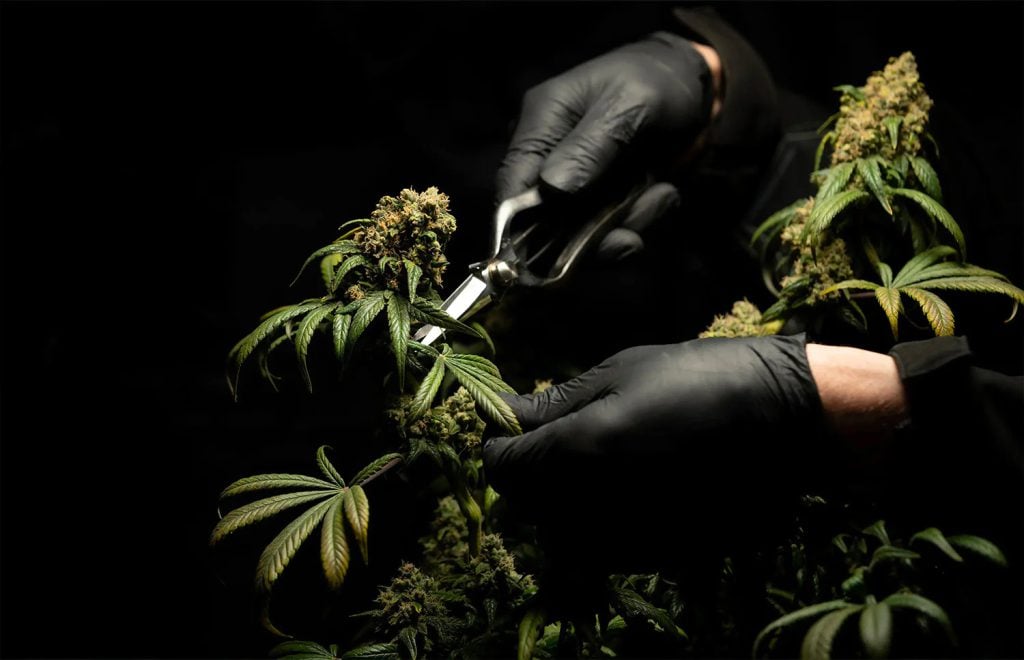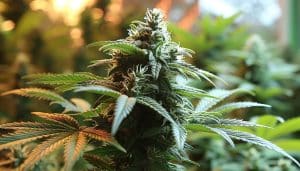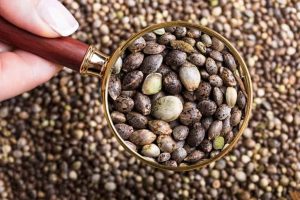Although the cannabis Or the most widespread illegal drug culture in the world, we know very little about its production, trade and consumption worldwide. This is mainly due to more than a century of global prohibition and the dangers associated with research on the culture of illegal drugs.
Worse, the few data available on the culture of cannabis are most often inaccurate, unreliable and very controversial. If this situation has always been problematic, in terms of knowledge and elaboration of informed policies, it has now become even more acute. Thus, global trends in decriminalization and legalization already cause consequences of which a cannabis varieties legislation cultivable.
THE CANNABIS PLANT: WHAT IS IT?
THE Sativa cannabis, better known as a source of marijuana, is the most recognizable, notorious and controversial plant in the world. If the structure of the plants may seem much simpler than that of animals, the architectural adaptations of C. Sativa are very complex and intelligently designed to fulfill a wide variety of functions.
THE cannabis plants Vary enormously in height depending on the environment and according to whether they are selected for their rod fiber (the highest type). But they generally measure 1 to 5 m high. The main stem is erected, crisscrossed (especially when it is large), with a somewhat wooded interior. In addition, it can be hollow in the internods (portions of the stem between the bases of the stems of the leaves). Although the stem is more or less woody, the species is often qualified as grass or herbaceous plant. Herbs and herbaceous plants are defined as devoid of significant woody tissues, so that these terms are not really accurate.
CANNABIS: A GENERAL TERM
The term “cannabis” in the broad sense designates the cannabis plant, especially :
- its psychoactive chemicals, used in particular as illicit and medicinal drugs,
- Its fibrous products such as textiles, plastics and dozens of building materials,
- edible seeds based on seeds, today present in more than a hundred processed foods, and
- all the considerations associated with it.
Concretely, the cannabis is a generic term which designates all aspects of the plant, in particular its products and their use.
WHAT ARE THE DIFFERENT SPECIES OF CANNABIS PLANTS?
Cannabis Indica and Cannabis Sativa are the two main varieties of the cannabis plant. There are many other original local varieties of the two varieties that come from many regions of the world.
Within each of these varieties, there are a large number of individual strains, each with a different cannabinoid profile and medicinal effect. As Indica strains contain more chlorophyll than sativa strains, they develop and ripen faster.
Pure sativa
Pure sativa cannabis is a rarity in the field of medical marijuana because these strains are a challenge to cultivate, especially inside and outside. Seeds of this type are also rare to find because sellers like to store popular varieties and pure sativas are not so popular. Sativa cannabis seeds come mainly from more equatorial regions (Colombia, Mexico and Southeast Asia).
They grow like high and thin plants, with narrow leaves and are light green in color. They quickly grow compared to the Indica strains and can reach 20 -foot heights in a single season. Once the flowering has started, they can take 10 to 16 weeks to mature completely. The flavors range from earthy to sweet and fruity.
- The effects of sativa cannabis
The effects of pure sativa can often induce paranoia and irregular cardiac beats. Therefore, as a recreational substance, pure sativas are a rare choice. If too much pure sativa is consumed, it can give a similar feel to drink too much caffeine. The positive effects of sativas are their edifying capacities that can help:
- the Depression,
- tiredness,
- stimulation of appetite,
- pain, and
- to nausea.
Although pure sativas cannabis seeds are quite rare, they are very coveted by breeders who use their genetic stability to create hybrid design strains.
Dominant sativa hybrid
These are sativa strains that have been pollinated and crossed by a coach to meet special criteria such as exotic odors, tastes and stimulating effects for which sativas are known. Often, these hybrids contain a certain genetics indica but mainly seem of a dominant sativa nature.
The dominant hybrid strains of Sativa are coveted for the motivation properties they have, often without paranoia associated with pure sativa strains. The dominant sativa strains are edifying, energetic and have a brain high ”which best suits day smoking. These types have qualities of antidepressant and appetite stimulation, and can be very precious as a drug in this regard.
Pure indica
The pure Indicas come at the origin of the Haschich producing countries in the world such as Pakistan, Afghanistan, Morocco and Tibet. These are short and dense plants, with large cannabis leaves that often grow darker green, with more chlorophyll and fewer accessory pigments. For information, accessory pigments protect the plant from excessive sun light.
After the start of flowering, the Pure Indicas seeds ripen in 6 to 8 weeks and are better for indoor culture because they do not grow as large as sativas. Their flowers will be thick and dense, with flavors and aromas ranging from spicy fuss with soft and fruity. Indica plants have by far the most painful, sedative and relaxing effect. Consumers generally use indicas for insomnia and intense pain later in the day because it has a strong cloudy high type.
Dominant indica hybrid
In terms of medical value, they are the best and most widely appreciated. Today’s “Kush” strains are an excellent example of these types and are by far the most popular. They tend to have many qualities that the producer and the consumer find to their taste.
Consequently, the majority of medical marijuana is an indica hybrid. Due to their higher CBD levels resulting from breeding with Ruderalis cannabis, these varieties are also useful. These are their uses as a sleep aid for those who suffer from injury, insomnia or severe inflammation.
Harsh
Cannabis Ruderalis is a cannabis subspecies just like cannabis Indica and Cannabis Sativa. It is from Central Russia and has very unique and distinctive qualities. Ruderalis has very few THC (tetrahydrocannabinol) content and is almost never cultivated for recreational purposes. Its high content in CBD (cannabidiol) makes this strain more and more popular as a reproductive for medicinal stumps. Ruderalis is very interesting in the fact that it flowers according to age rather than the light of light. This is called self -foliage. This means that even if it is subject to an indoor culture (cultivated inside) within 24 hours of light, it will automatically begin to produce flowers according to its own genetic calendar.
Thus, when crossed with an Indica or a Sativa, these will be very likely to self-foliage and to have a higher CBD content. Ruderalis is also quite resistant to damage caused by insects or diseases. Ruderalis cannabis and its genetic advantages have radically changed the way geneticists and seed selectors create strains.
CANNABIS SEEDS: WHAT DOES GLOBAL LEGISLATION SAY?
The devaluation of arguments favorable to a Legalization of cannabis continues to evolve fast. Despite this, the market of cannabis seeds Always remain animated. For example, France has so far remains the biggest cannabis consumer in Europe. It is therefore not uncommon to see online stores offering Collection cannabis seeds in France. While the sales websites of cannabis seeds are constantly increasing, many people wonder about the legality or not of the product.
IS CANNABIS LEGAL?
The truth is that cannabis is authorized for consumption, culture and sale but on the inviolable condition that The THC level does not exceed 0.3%. Indeed, the cannabis seeds whose content THC is not in line with this rule are psychoactive. They influence the functioning of the brain and create in consumers a High effect. Also, most experts in different countries have retained a list of Legal cannabis varieties. Most come from Sativa cannabis.
It is considered safer because its content in THC It is low and conversely its high CBD content earned him large -scale uses, especially in the medical field. Finally, you can plant any species of cannabis plant provided that the THC content is less than or equal to 0.3%. If this condition is not met, then any use of plants in this species is considered illegal.
CULTURE OF CANNABIS IN FRANCE FOR PROFESSIONALS: WHAT DOES THE LAW SAY?
French law did not have a strict look at the different varieties of hemp. Recently, a distinction has been clearly made and hemp is distinguished, that is to say cannabis intended for industrial use of cannabis cultivated for the extraction of cannabinoids. As a producer, the cultivation of cannabis is framed by laws. The main lines of these laws are listed below.
- Cultivated species must belong to one of the varieties of sativa cannabis L authorized to culture.
- The THC content of the plants obtained must be less than or equal to 0.3%.
- THE cannabis seeds must be obtained from the Central Cooperative of Hemp producers.
Individuals, on the other hand, are struck by a strict prohibition posed by French legislation. It is therefore prohibited for any particular to have germinate or plant cannabis seeds Even if it is for personal consumption. Otherwise, you are exposed to sanctions.
WHAT ARE THE AUTHORIZED CANNABIS CULTIVATION SYSTEMS?
Answering this question amounts to browsing the laws in force in each country. But the good news is that the systems of cannabis culture are practically the same in all countries that have accepted its culture. There are three main typologies of legal systems for cultivation of cannabis based on the regulations in force: inside or Indoor culture, with mixed light and outside. These three production systems can of course have an impact on the environment through different ways.
WHAT ARE THE IMPACTS OF CANNABIS CULTURE SYSTEMS ON THE ENVIRONMENT?
Culture systems of cannabis Interior and mixed may require higher external inputs (for example, energy and fertilizers) but are also associated with higher yields. They also lead to a reduction in concerns about the degradation of the ecosystem. External farms may require fewer inputs of resources.
However, mismanagement or poor location can disrupt surrounding ecosystems. THE culture systems inside and outside Can be associated with risk of air pollution from biogenic biogenic organic compounds (COVB) which can be pioneers in ozone formation. To date, these various concerns have not been the subject of systematic research.
In addition, in practice, there are countless variations and combinations between production systems. For example, in a single farm, the cannabis plants mothers can be kept inside. Conversely, cloning takes place in mixed light environments and that full plants are cultivated outside.




